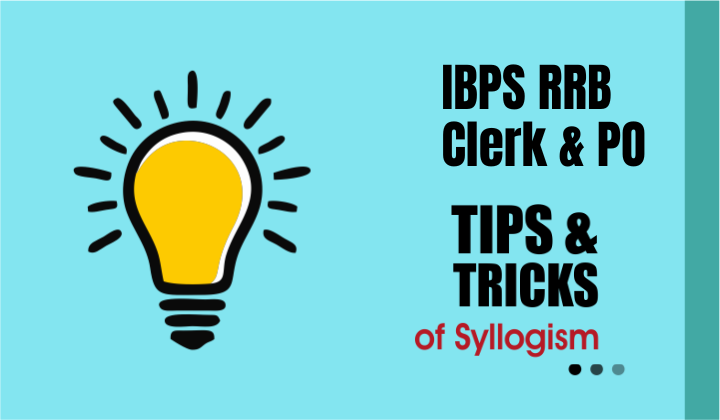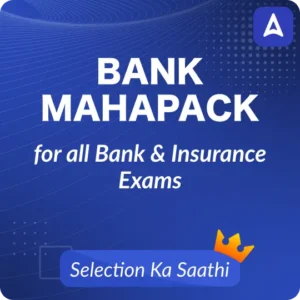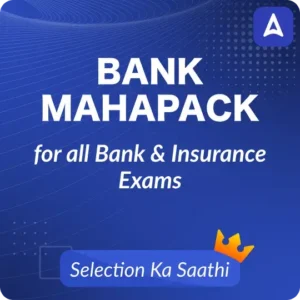Syllogism is one of the most important topics in the Reasoning section of IBPS RRB Exam, which is often discussed due to its logical nature and scoring potential. It tests the candidate’s ability to draw valid conclusions from the given statements, making it a must-have for those aiming to score high marks in the Reasoning Ability section. Given its frequent appearance in previous IBPS RRB Clerk and PO 2025, mastering syllogisms is indispensable for candidates.
Syllogism Shortcuts for IBPS RRB Clerk and PO 2025
Syllogism is a form of logical reasoning that involves drawing conclusions from two or more given statements or premises. Rooted in ancient logic, the concept was formalized by the Greek philosopher Aristotle, but today, it holds practical importance in competitive exams like IBPS RRB. To tackle these problems accurately, candidates are encouraged to follow standardized rules and techniques. One of the most effective methods for solving syllogism questions is using Venn diagrams, which visually map out relationships between the given statements, making it easier to deduce valid conclusions.
Tricks & Rules of Syllogism for IBPS RRB Clerk and PO 2025
Syllogism is a very scoring and easy topic in the Reasoning section of the IBPS RRB exam. By following some simple rules and tricks, you can solve these questions quickly and accurately.
Use Venn Diagrams: Always draw Venn diagrams to visualize the statements clearly. It helps you check the conclusions properly.
Pay Attention to Key Words: Words like “some,” “all,” “no,” “not,” “at least,” and “a few” are crucial. Read them carefully before jumping to conclusions.
Two Negative Statements = No Positive Conclusion: If both statements are negative, no positive conclusion can be drawn.
Two Positive Statements = No Negative Conclusion: If both statements are positive, a negative conclusion is not valid.
Possibility Conclusions: If a conclusion says “It is possible,” and it fits in even one correct diagram, then it is considered true.
No Conclusion from Two Particular Statements: If both statements are particular (e.g., “Some A are B” and “Some B are C”), then no definite conclusion can be drawn.
Conclusion Must Follow Both Statements: A valid conclusion must be true based on both given statements, not just one.
Be Cautious with “Some not”: “Some not” is a strong negative statement. It can only be concluded when it is clearly shown in the Venn diagram.
Don’t Assume Reversibility
- “All A are B” does not mean “All B are A”
- “Some A are B” does not mean “Some B are A”
Avoid such reverse logic unless the question supports it.
Real-World Knowledge Is Not Allowed: Only use the information provided in the statements. Real-life facts should not influence your answer.
Practice Questions for IBPS RRB Clerk and PO 2025
Directions (1-5): In the question below, three statements are given followed by the conclusions. You have to take the given statements to be true even if they seem to be at variance with commonly known facts. Read all the conclusions and then decide which of the given conclusions logically follows from the given statements disregarding commonly known facts.
Q1. Statements: Only a few Peacocks are Ostrich.
Only a few Rats are Swans.
Some Swans are Peacocks.
Conclusions: I. Some Rats can be Ostrich.
II. All Swans being Ostrich is a possibility.
(a) Only I follows
(b) Only II follows
(c) Either I or II follows
(d) Neither I nor II follows
(e) Both I and II follow
Q2. Statements: All Boards are Tube lights.
Only a few Wires are Boards.
All Switches are Boards.
Conclusions: I. All wires being Switches is a possibility.
II. Some Switches being Wires is a possibility.
(a) Only I follows
(b) Only II follows
(c) Either I or II follows
(d) Neither I nor II follows
(e) Both I and II follow
Q3. Statements: Some Eagles are Pigeons.
Only a few Parrots are Eagles.
All Parrots are Peacocks.
Conclusions: I. Some Peacocks can be Pigeons.
II.No Eagles are Peacocks.
(a) Only I follows
(b) Only II follows
(c) Either I or II follows
(d) Neither I nor II follows
(e) Both I and II follow
Q4. Statements: All Cats are Dogs.
Only a few Dogs are Rabbits.
All Rabbits are Rats.
Conclusions: I. Some Cats are Rats.
II.No Cats are Rats.
(a) Only I follows
(b) Only II follows
(c) Either I or II follows
(d) Neither I nor II follows
(e) Both I and II follow
Q5. Statements: All Animals are foods.
Only a few Birds are Humans.
All foods are Humans.
Conclusions: I. Some Birds are not Humans.
II.No Animals are Humans.
(a) Only I follows
(b) Only II follows
(c) Either I or II follows
(d) Neither I nor II follows
(e) Both I and II follow
Directions (6-10): In each question below, some statements are given followed by some conclusions. You have to take the given statements to be true even if they seem to be at variance with commonly known facts. Read all the conclusions and then decide which of the given conclusions logically follows from the given statements, disregarding commonly known facts:
(a) Only I follow
(b) Only II follow
(c) Either I or II follow
(d) Neither I nor II follow
(e) Both I and II follows
Q6. Statements: Only a few Study is Research
No Study is Flower
All Food is Research
Conclusions: I. All Flower is Food is a possibility
II. Atleast some Food is study
Q7. Statements: All Blue is Grey
Only a few Olive is Grey
No Green is Blue
Conclusions: I. Some Green is Grey is a possibility
II. All Blue is Olive is a possibility
Q8. Statements: Only Apple is Mango
No Grapes is Apple
No Orange is Grapes
Conclusions: I. Some Apple is Orange
II. All Orange is Apple is a possibility
Q9. Statements: All Paper is Pen
All Pencil is Book
No Paper is Pencil
Conclusions: I. No Book is Paper
II. Some Pencil is Pen
Q10. Statements: Only a few Flower is Fruit
No Tree is Fruit
Some Green is Tree
Conclusions: I. No Green is Fruit
II. Some Fruit is Green
Directions (11-15): In the question below, three statements are given followed by the conclusions. You have to take the given statements to be true even if they seem to be at variance with commonly known facts. Read all the conclusions and then decide which of the given conclusions logically follows from the given statements disregarding commonly known facts.
Q11. Statements: No Quilts are Woolen.
Only a few Woolen are Fabrics.
Only a few Fabrics are Silk.
Conclusions: I. Some Quilts are not Fabrics
- Some Silk are not Woolen
(a) If only conclusion I follows.
(b) If only conclusion II follows.
(c) If either conclusion I or II follows.
(d) If neither conclusion I nor II follows.
(e) If both conclusions I and II follow.
Q12. Statements: Only a few Shades are Camps.
Some Camps are Fire.
All Fires are Music.
Conclusions: I. All Camps are Fire
- Some Camps are not Fire.
(a) If only conclusion I follows.
(b) If only conclusion II follows.
(c) If either conclusion I or II follows.
(d) If neither conclusion I nor II follows.
(e) If both conclusions I and II follow.
Q13. Statements: Only a few Ears are Earrings.
No Earrings are Fiber.
Only a few Fiber are Goggles.
Conclusions: I. Some Ears are not Fiber
- Some Goggles are not Earrings.
(a) If only conclusion I follows.
(b) If only conclusion II follows.
(c) If either conclusion I or II follows.
(d) If neither conclusion I nor II follows.
(e) If both conclusions I and II follow.
Q14. Statements: Only a few Classic are Western.
Only a few Western are Jazz.
All Western and Jazz are Salsa.
Conclusions: I. Some Jazz are not Classic
- All Classic can be Salsa.
(a) If only conclusion I follows.
(b) If only conclusion II follows.
(c) If either conclusion I or II follows.
(d) If neither conclusion I nor II follows.
(e) If both conclusions I and II follow.
Q15. Statements: Only a few Rhymes are Poems.
Some Poems are not Limericks.
Some Limericks are not Verses.
Conclusions: I. Some Rhymes are Limericks.
- No Rhymes are Limericks.
(a) If only conclusion I follows.
(b) If only conclusion II follows.
(c) If either conclusion I or II follows.
(d) If neither conclusion I nor II follows.
(e) If both conclusions I and II follow.




 RBI Lateral Recruitment 2026 Notificatio...
RBI Lateral Recruitment 2026 Notificatio...
 The Hindu Review November 2025, Download...
The Hindu Review November 2025, Download...
 Bank of India Apprentice Recruitment 202...
Bank of India Apprentice Recruitment 202...







